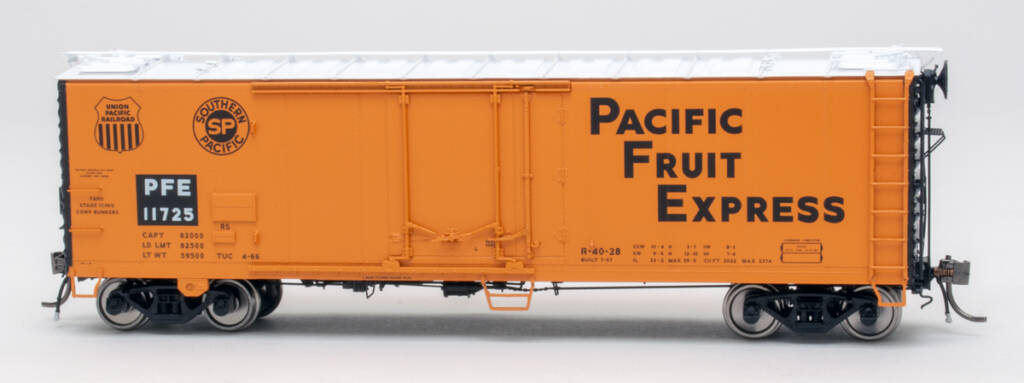
Pacific Fruit Express class R-40-27 and R-40-28 ice cooled refrigerator cars are now available in HO scale from Rapido Trains. The models, offered for the first time in plastic, are scaled from prototype blueprints and field measurements. Product features include wire grab irons; prototype-specific brake wheel, running boards, and cooling fan housings; and body-mounted Lincoln-Washington semi-scale metal couplers.
Prototype history
The class R-40-27 cars, numbered 10001 through 11700, were built between January and August 1957. Construction of this 1,700-car lot was spread between PFE shops in Colton, Roseville, and Los Angeles, Calif.
The class R-40-28 refrigerator cars, part of the 11701 through 11800 series, were built in July 1957 by SP Equipment Co. in Los Angeles. The 100-car lot was the last group of PFE cars to use ice for refrigeration.
We received samples of the R-40-27 and R-40-28 cars. For the review, I’ll focus on a car from the latter class, PFE No. 11725.
Model features
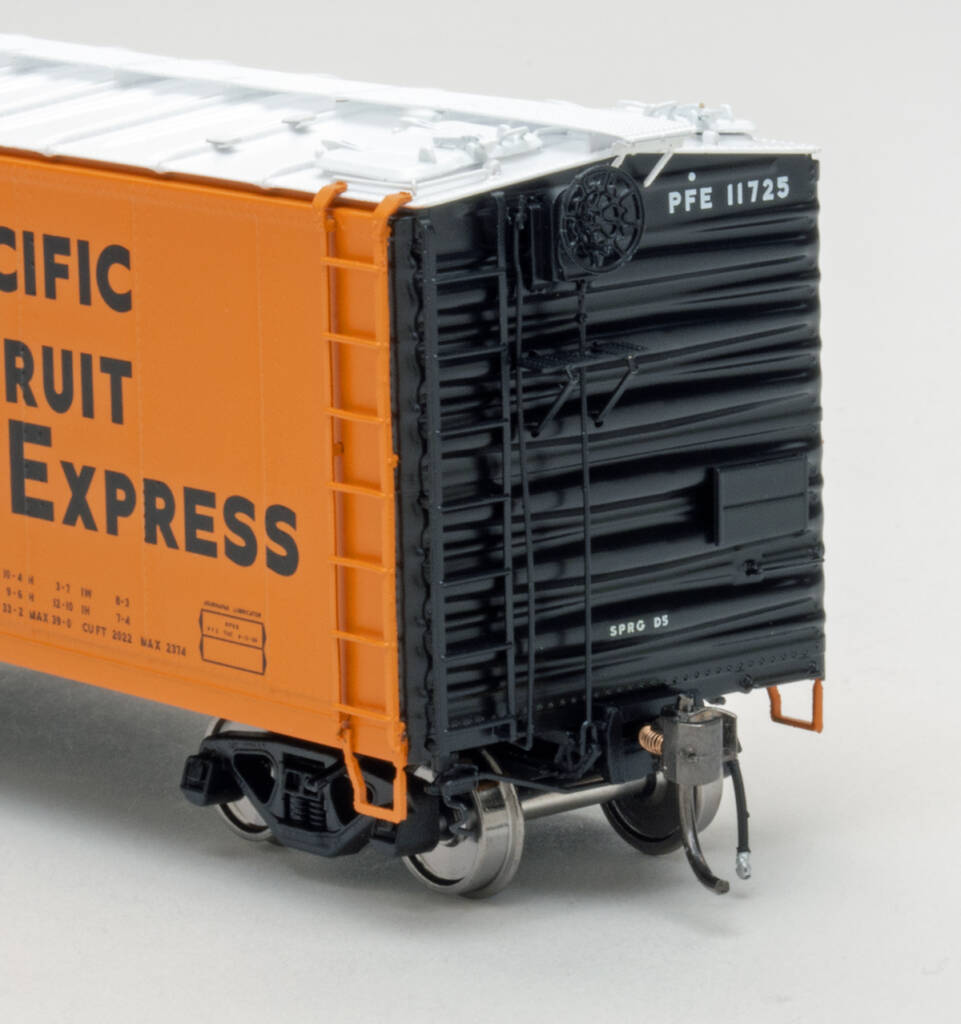
The Rapido Trains model has a one-piece injection-molded plastic body with many freestanding, factory-applied details. On top, the refrigerator car has a etched-metal running board and multi-piece hatch covers with formed-wire handles on top and latch hardware on the bottom. The covers can be opened. And you guessed it. Rapido included see-through metal ice grates inside the car. Pretty neat!
The sides of the car have crisp rivet and body panel detail. Molded details include the door stops for the 6-foot plug door, hinges for the 2-foot door, and placard and route boards. Factory-applied details include plastic 7-rung ladders, stirrup steps, and door hardware (levers, rods, and tracks), as well as formed-wire grab irons.
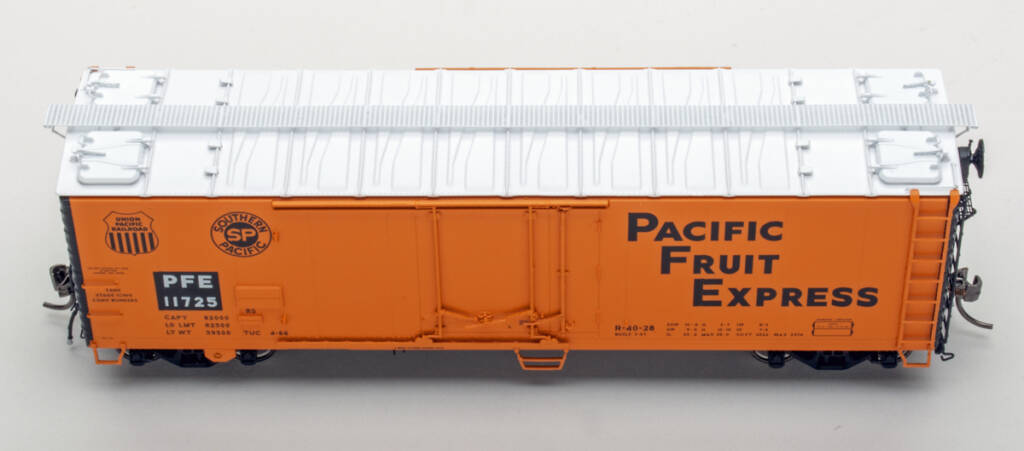
The car ends have plastic ladders, wire grab irons, and factory-installed placard boards. Additional details on the brake, or B end, of the reefer include a plastic hand brake, Ajax brake wheel, retaining valve, and etched-metal brake platform.
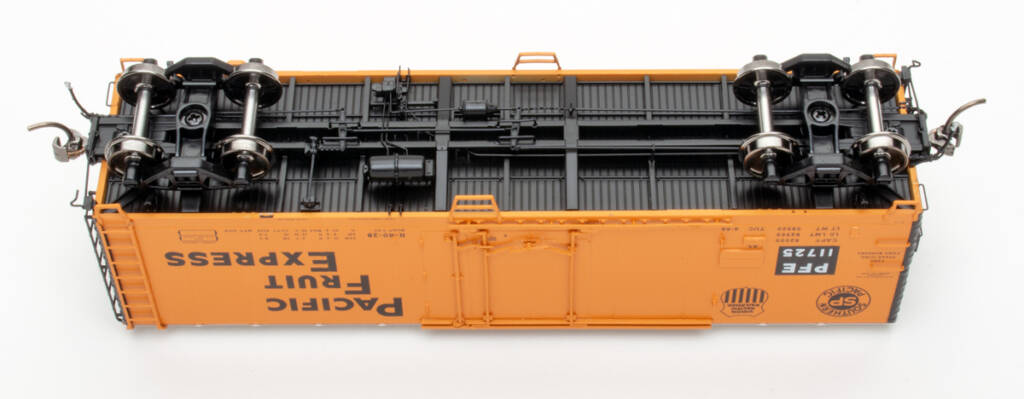
The underbody is a separate plastic casting. Metal weights are attached to the top with a screw. The bottom has molded floor board and stringer detail. The center sills, crossbearers, crossties, body bolsters, and bolsters are cast as a single unit.
The well-detailed AB brake system features a mix of plastic and formed wire parts. The draft-gear boxes have a separate, screw-mounted lid.
Engineering plastic was used for the American Steel Foundries solid-bearing trucks. The sideframes have raised foundry data. The refrigerator car rides on 33″ insulated metal wheelsets.
Measuring up
The review sample we received is decorated in PFE’s 1966 paint scheme with Gothic lettering, outline-style Southern Pacific and Union Pacific heralds, orange sides, black ends, and a white roof. The paint is smooth and evenly applied, and the separation lines between colors are crisp.
Graphic placement follows a prototype photo in Pacific Fruit Express: Second Edition by Anthony W. Thompson, Robert J. Church, and Bruce H. Jones (Signature Press, 2000). The model’s dimensions closely follow prototype drawings on page 189 in the same book.
I put the refrigerator car in a train on our Winston-Salem Southbound layout. The model performed without incident while being pushed and pulled on the Tar Branch, which has a No. 4 minimum turnout and 30-degree crossing.
Pacific Fruit Express refrigerator cars traveled throughout the nation’s rail network. If your HO scale model railroad is set between 1957 and 1982, you’ll want to add a few of the Rapido R-40-27 and R-40-28 models to your rolling stock fleet.
Facts & features
Price: single car, $59.95; six-pack, $359.70
Manufacturer
Rapido Trains
382 High St.
Buffalo, NY 14204
rapidotrains.com
Era: 1957 to 1982 (varies based on paint scheme)
Road names: Pacific Fruit Express (R-40-27 — 1957, 1961, 1966, and 1970s Top Ice Ventilator service schemes. R-40-28 — 1957, 1961, and 1966 schemes).
Features
- 33″ metal wheelsets, correctly gauged
- Body-mounted Lincoln-Washington semi-scale couplers, at proper height
- Minimum radius, 18″
- Weight: 4.4 ounces, .5 ounce too heavy per National Model Railroad Association Recommended Practice 20.1







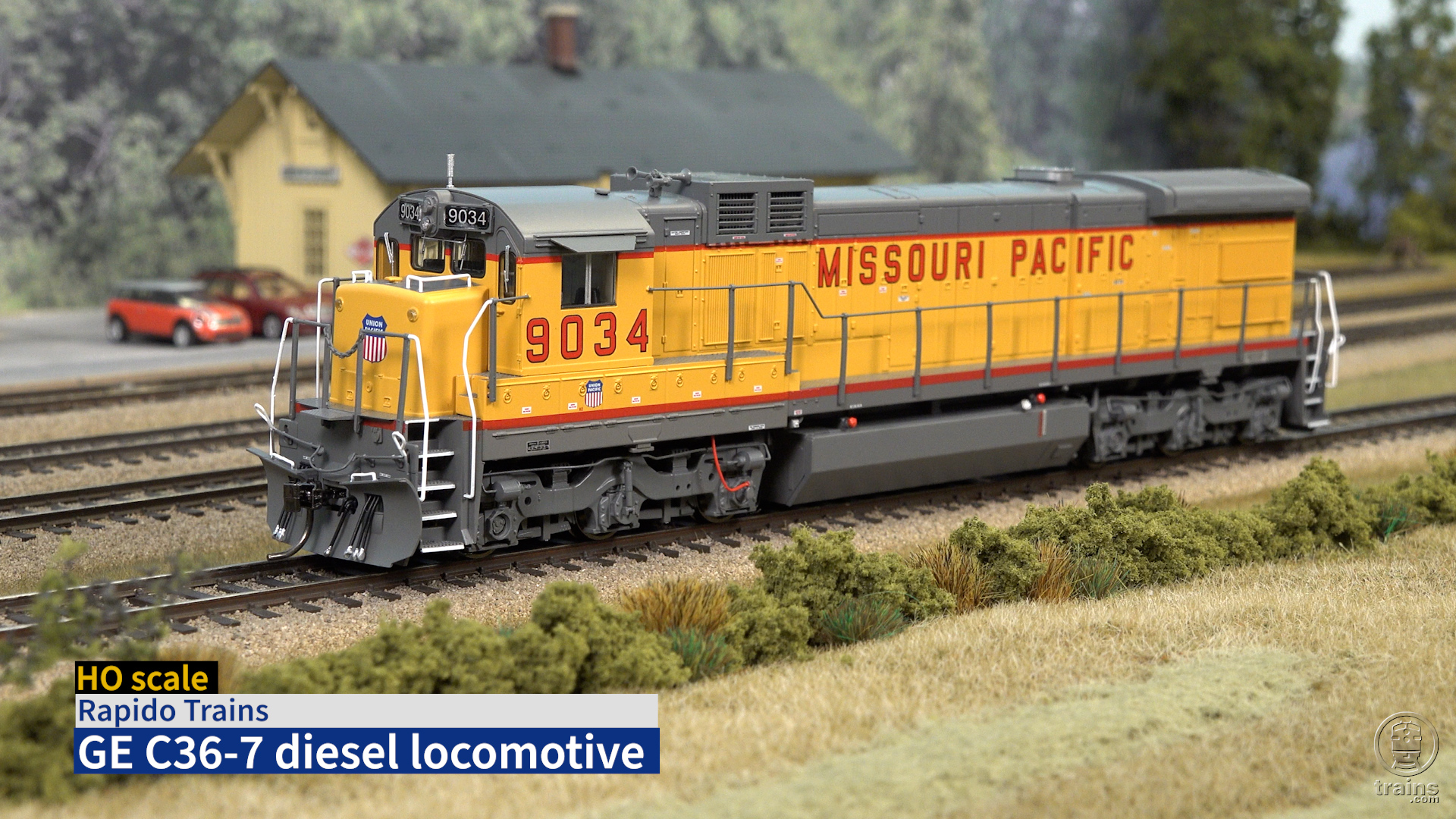
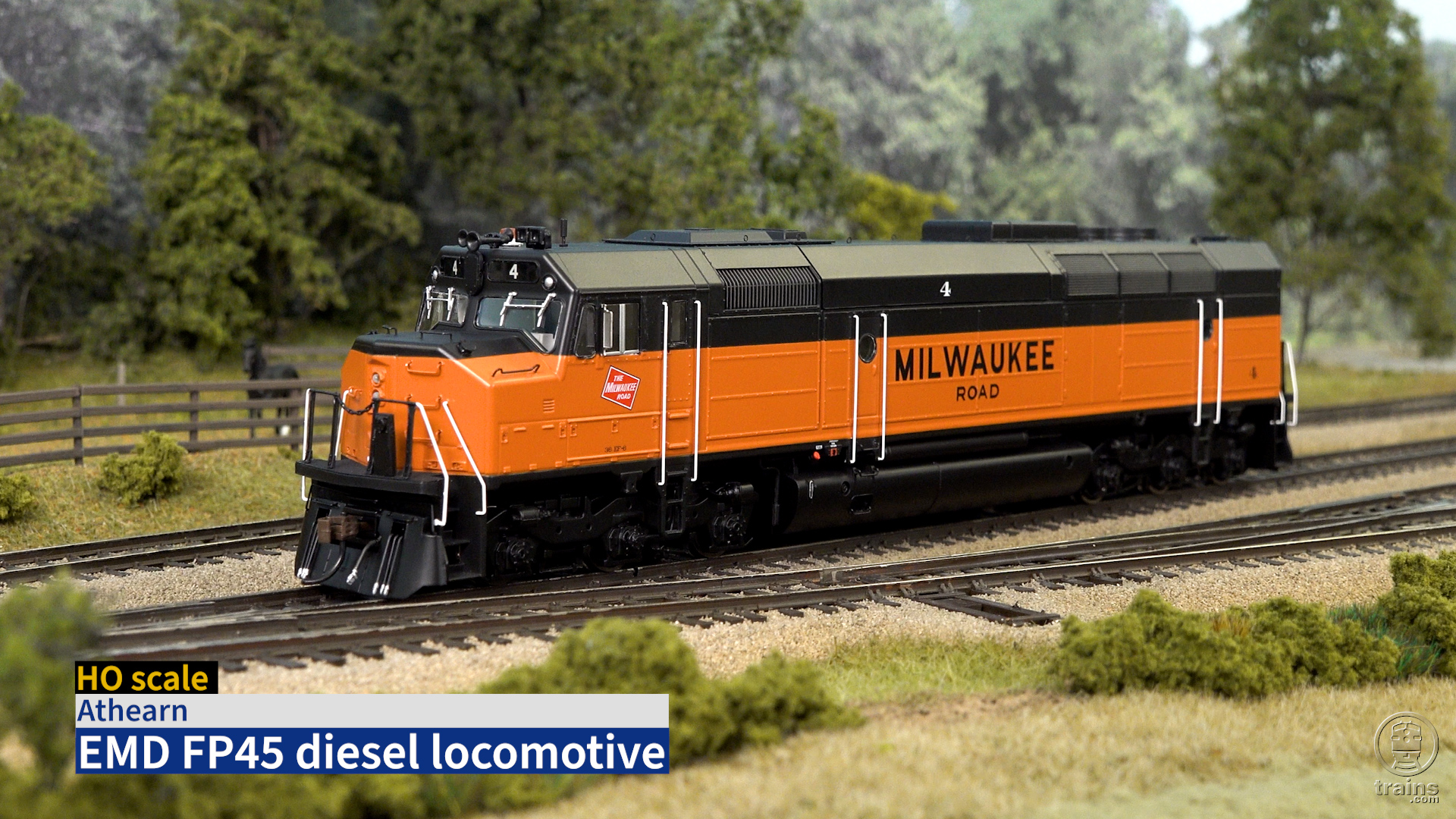
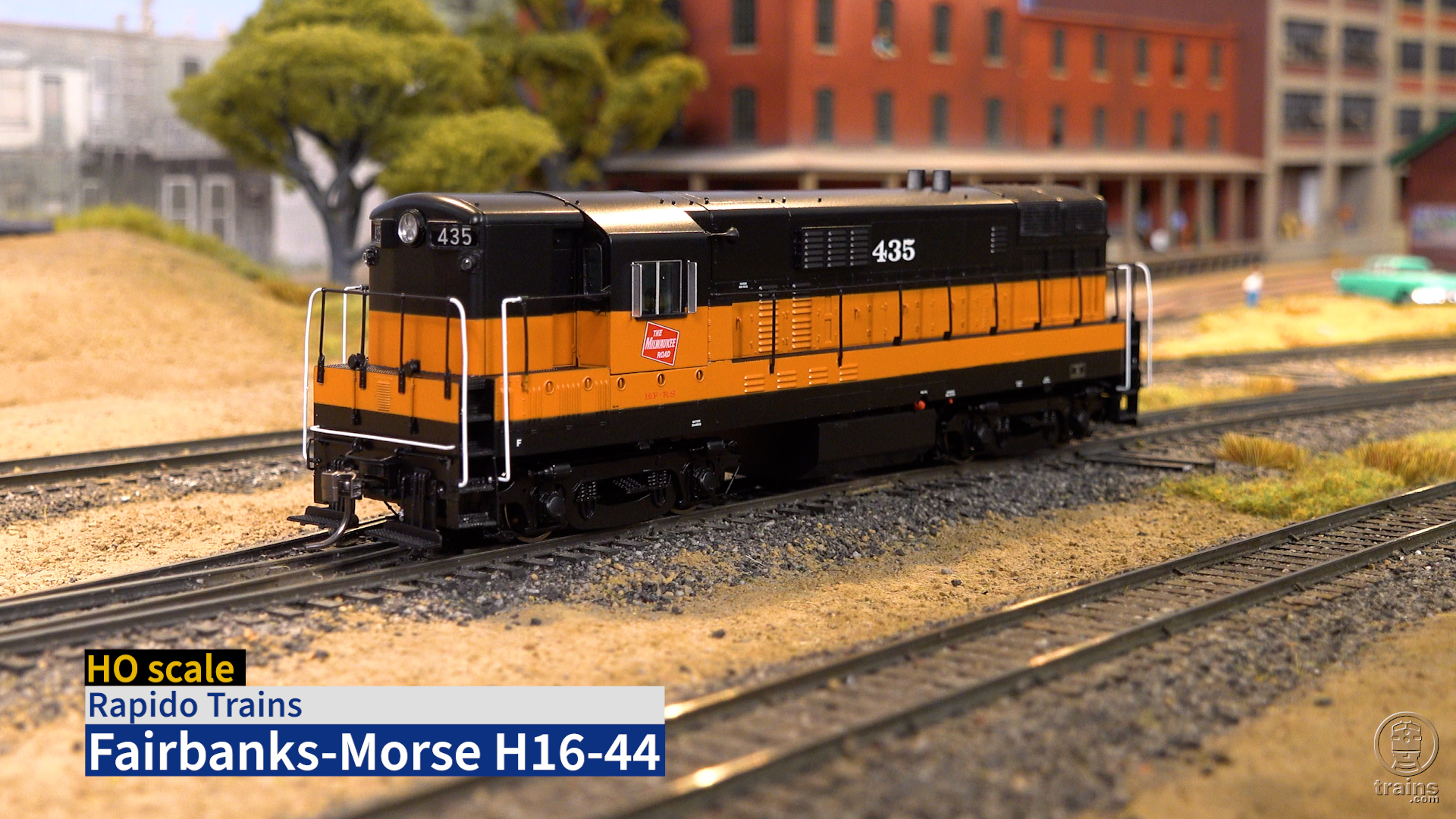
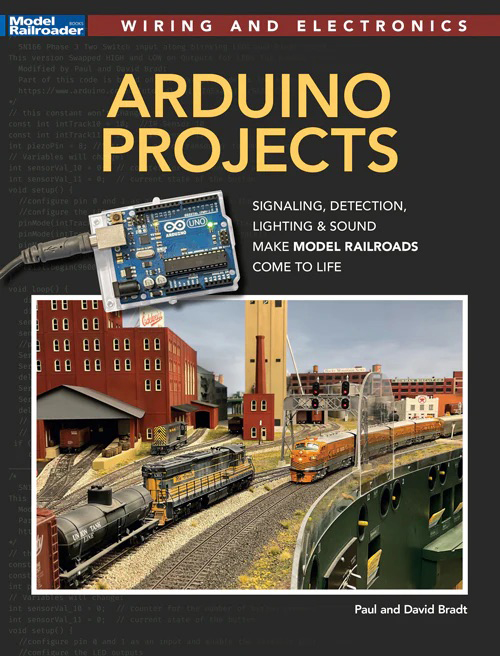
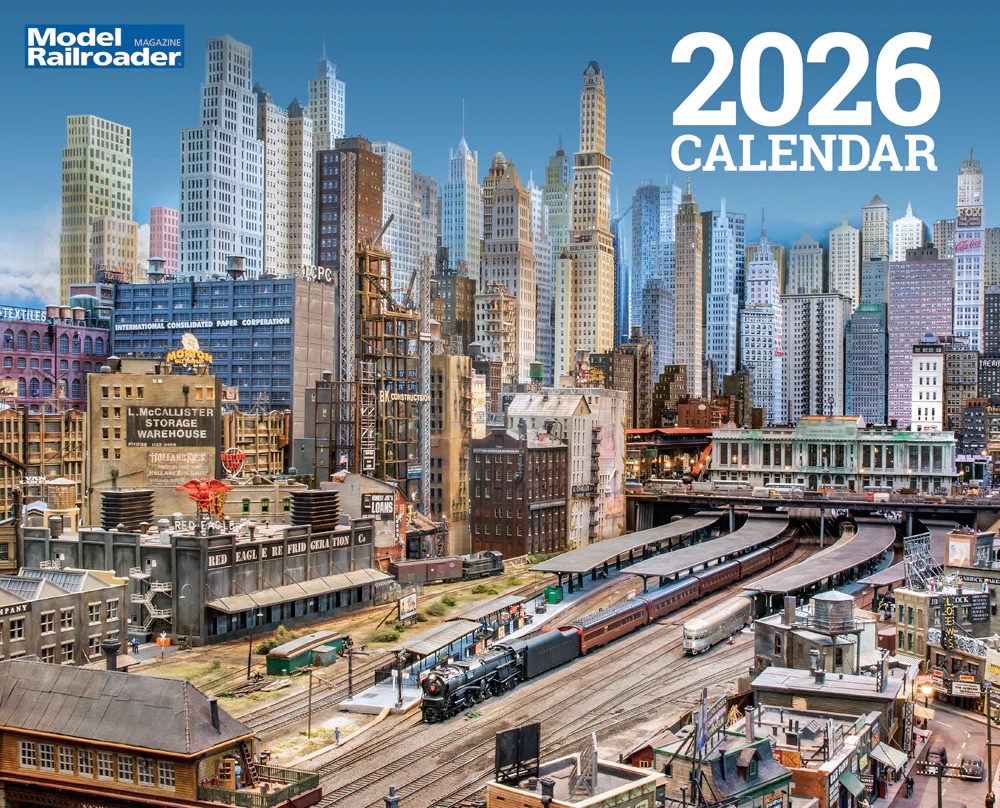

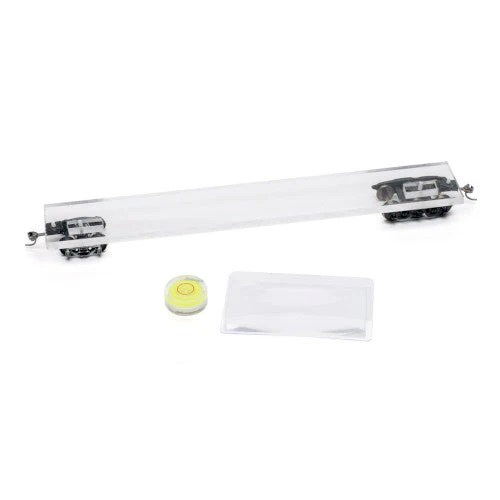
This gorgeous reefer is another awesome project that Rapido has brought to life.
Dr. Güntürk Üstün